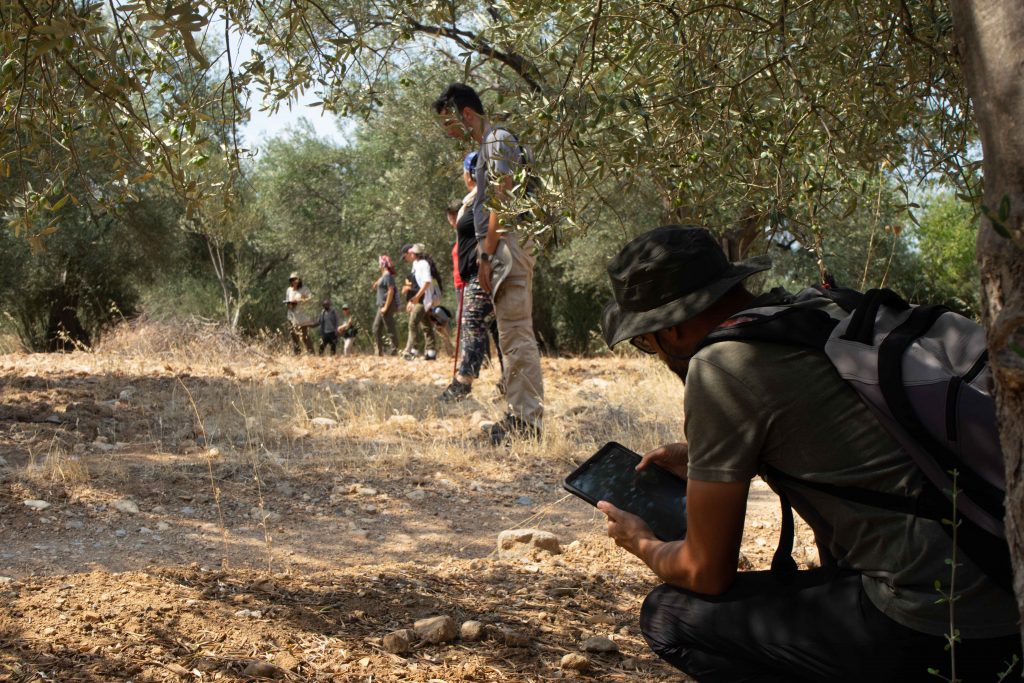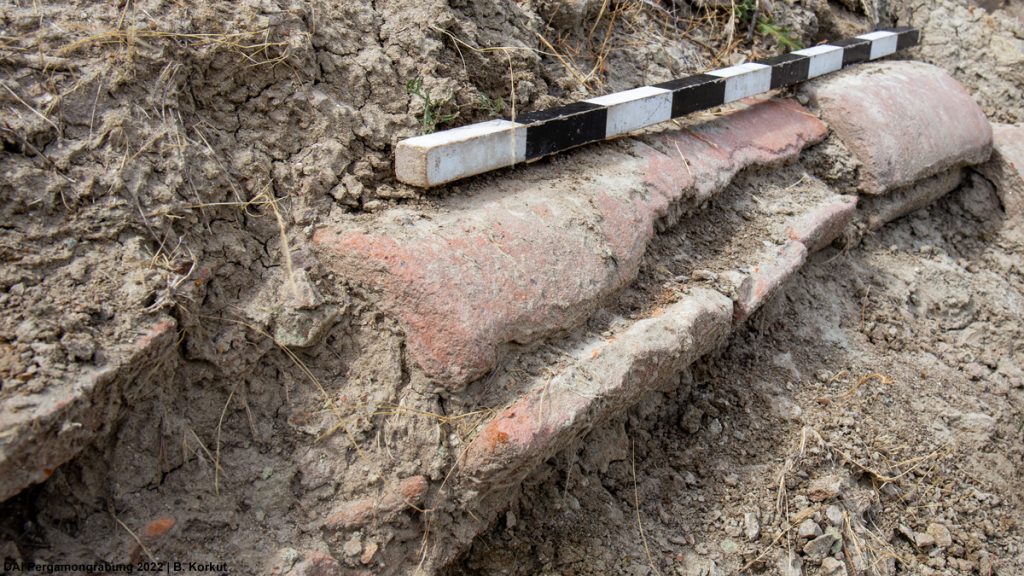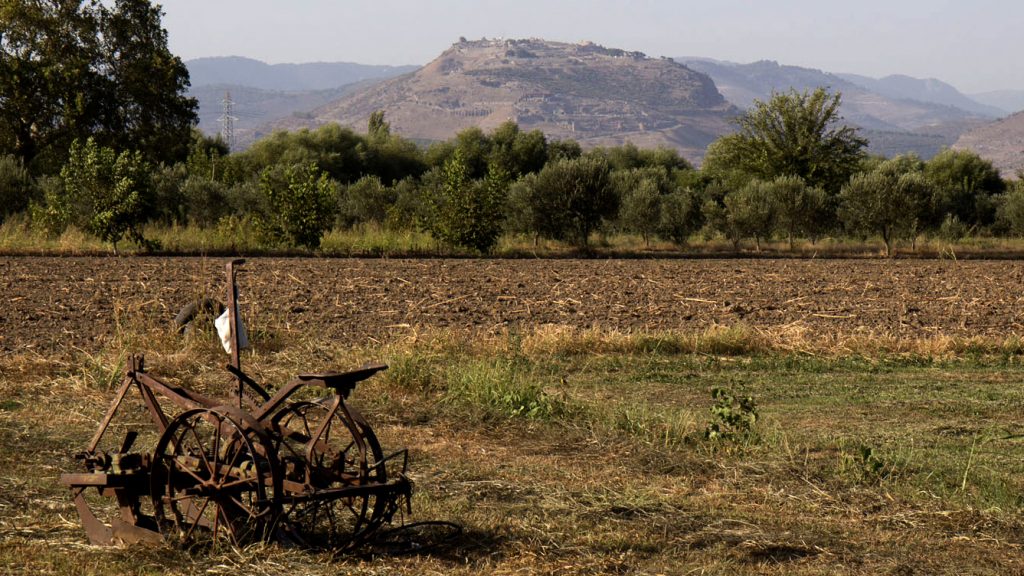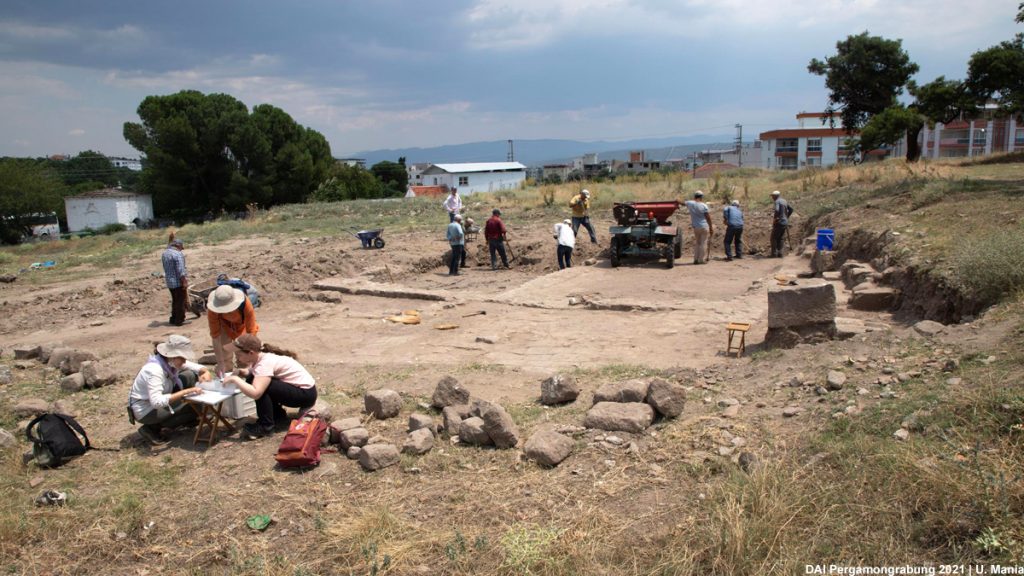Already in 1912 Carl Schuchhardt remarked that the development of the city of Pergamon could not be understood in isolation from the settlement history of the surrounding landscape. Until then, Schuchhardt had played a major role in researching the surrounding Pergamene landscape and his records still provide us with very important information today. His multidisciplinary approach, which included the cooperation with geographers among others, is now being taken up again within the framework of the project, and the investigation human-environment relations in the Pergamon Micro-Region is one of the central concerns of TransPergMikro.
This year’s field work concentrates on the southern side valleys of the western lower Kaikos Valley and the foothills of the Yünt Dağ mountains. One of the valleys has been systematically explored since last week by a Turkish-German team of archaeologists and ancient historians. The valley is dominated by a rural settlement dating back to the bronze age, which had not been abandoned before the late Byzantine period – i.e. a continuity of settlement activities comparable with the city-hill of Pergamon. Currently the distribution of finds in the valley is registered by intensive field-walking and the usage of smartboards with a GPS-linked application. Hopefully we will be able to report more detailled results soon. Geophysical prospections will support us in the next week in our field work. In addition a team of German and Turkish geographers will begin with first field work, which will we report on in our blog soon.

The team will continue to work in the region for another five weeks and we hope for many new insights which we can also report on in our blog!
Team: Seçkin Acarcı, Mete Aksan, Sarp Alatepeli, Güler Ateş, Deniz Beygüler, Nazmiye Çelik, Adriana Günzel, Cansu Köprülü, Bernhard Ludwig, Ece Su Mercangöz, Felix Pirson, Gözde Şakar, Annika Skolik, Merve Talı, Murat Tozan, Şahin Uysal



